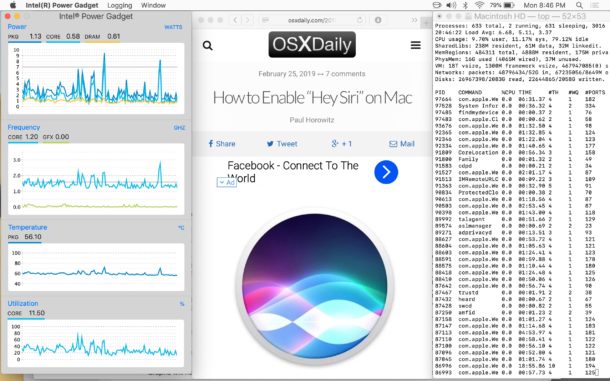
At one point the Gecko Profiler used this API on Windows to implement experimental package power estimates.
Intel power gadget mavericks mac#
Version 3.0 (available on Mac and Windows, but not on Linux) also exposes an API from which the same measurements can be extracted programmatically. (An energia dashboard can be seen here please note that the data has not been updated since early 2014.) This feature has been used in energia, Roberto Vitillo's tool for systematically measuring differential power usage between different browsers. Intel Power Gadget can also log these results to a file.

Specificially, the temperature is a proxy measurement that is affected by processor power consumption, rather than one that affects it, which makes it even less useful than most proxy measurements. This is interesting, but again not useful for power profiling purposes.

The three panes display the following information: The following screenshot (from the Mac version) demonstrates the available measurements. On Mac and Linux, tools/power/rapl is probably a better tool to use. The main strengths of this tool are (a) it works on Windows, unlike most other power-related tools, and (b) it shows this data in graph form, which is occasionally useful. It may make parts of this document easier to understand. Note: The power profiling overview is worth reading at this point if you haven't already.


 0 kommentar(er)
0 kommentar(er)
